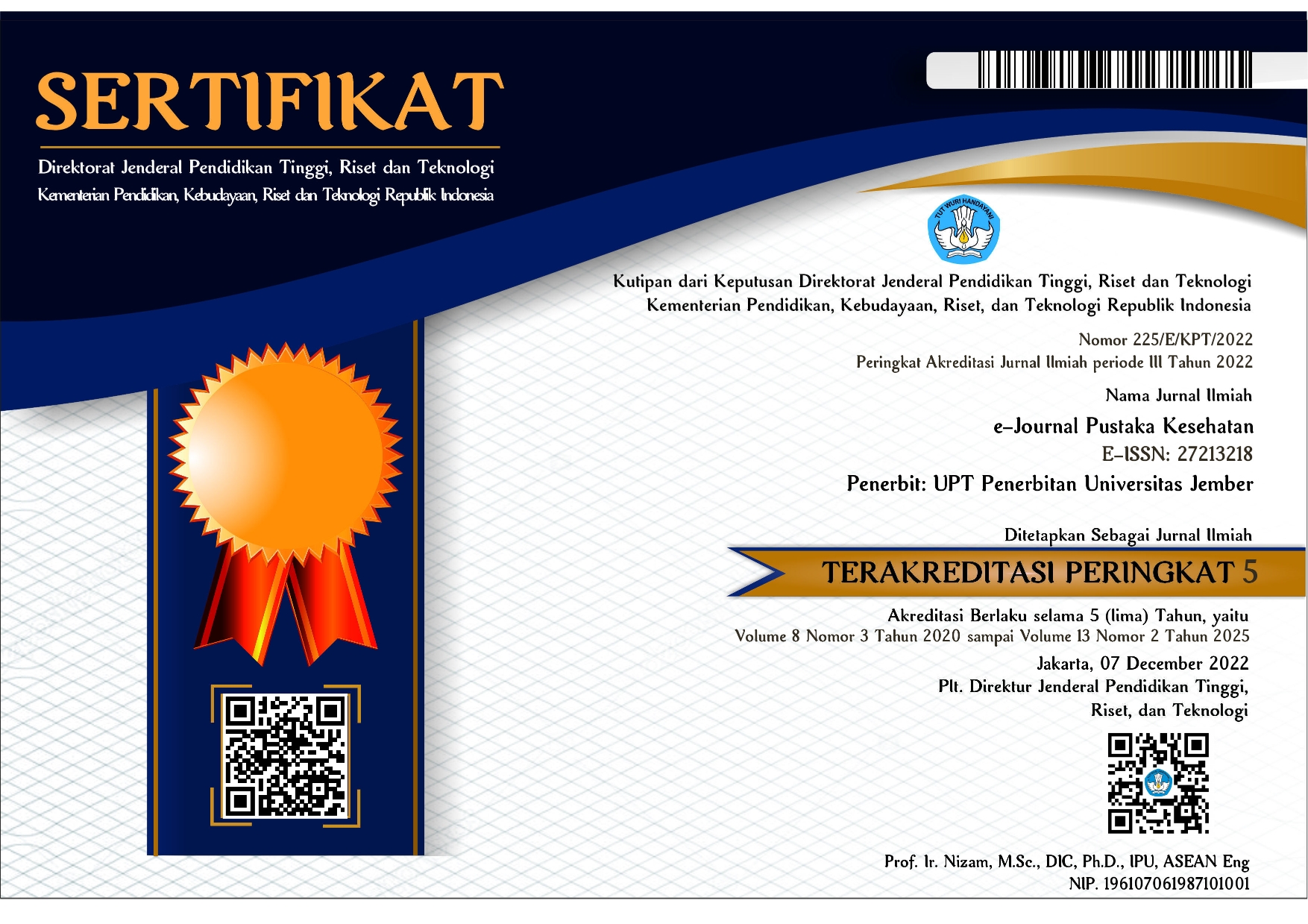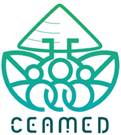Efektivitas Ekstrak Black Garlic dalam Menghambat Pertumbuhan Candida albicans
DOI:
https://doi.org/10.19184/pk.v8i3.12990Keywords:
Antifungal, Black garlic¸ Candida albicansAbstract
Black garlic has many properties naturally can be used as an antifungi. This study aims to determine the effectiveness of Black garlic extract in inhibiting the growth of Candida albicans and knowing the Minimum Inhibitory Concentration (MIC) and Minimum Fungicidal Concentration (MFC) of Black garlic extract against Candida albicans. This study used 5 groups of Black garlic extract concentration, namely 75%, 50%, 25%, 12.5%, and positive controls, with 5 replications. Extraction was carried out using maceration method with 96% ethanol solvent, while the antifungal test was carried out by liquid dilution method. MIC was determined by observing the turbidity and clarity of each test solution and compared to the control solution. MFC was determined by observing the presence or absence of fungi colonies growing on Sabouraud Dextrosa Agar (SDA) media after incubation for 24 hours. The results of the study carried out the Kruskall-Wallis test showed a significance value (p <0.05) which means that there were significant differences in all groups. In the Mann-Whitney test showed a significance value (p <0.05) which means there are differences between treatment groups. The conclusion is that Black garlic extract has the ability to antifungal with MIC at a concentration of 50% and MFC at a concentration of 75%.
Downloads
References
[2] Kulsum H. Aktivitas Antifungi Ekstrak Bawang Putih dan Black Garlic Varietas Lumbu Hijau dengan Metode Ekstraksi yang Berbeda terhadap Pertumbuhan Candida albicans. Skripsi. Surakarta: Fakultas Keguruan dan Ilmu Pendidikan Universitas Muhammadiyah Surakarta. 2014.
[3] Komari dan Sundari D. Pengaruh Fraksi Air Ekstrak Bawang Putih terhadap Kadar Kalium Iodat dalam Garam Berlodlum (The Effect of Garlic Extract on the Concentration of Potassium Iodate in Iodized Salt). Puslitbnag Gizi dan Makanan. 2009. 32(2): 150-158.
[4] Choi IS, Cha HS, dan Lee YS. Physicochemical and Antioxidant Properties of Black garlic. Molecules. 2014. 19(10): 16811-16823.
[5] Handayani SN, Bawono LC, Ayu DP, dan Pratiwi HN. Isolasi Senyawa Polifenol Black garlic dan Uji Toksisitasnya terhadap Larva Udang (Artemia salina Leach). Jurnal Ilmu Kefarmasian Indonesia. 2018. 16(2): 145-149.
[6] Ryu JH, dan Kang D. Physicochemical Properties, Biological Activity, Health Benefits, and General Limitations of Aged Black garlic: A Review. Molecules. 2017. 22(6): E919.
[7] Martins N, Petropoulos S, dan Ferreira ICFR. Chemical composition and bioactive compounds of garlic (Allium sativum L.) as affected by pre- and post-harvest conditions: A review. Food Chemistry. 2016. 211: 41-50.
[8] Lestari EP. Peran Faktor Virulensi pada Patogenesis Infeksi Candida albicans. Stomatognatic. 2010. 7(2): 113-117.
[9] Williams D, dan Lewis M. Pathogenesis and Treatment of Oral Candidiosis. Journal of Oral Microbiology. 2011. 3: 5771.
[10] Hakim L, dan Ramadhian MR. Kandidiasis Oral. Majority. 2015. 4(9): 53-57.
[11] Prasetya WH. Oral Thrush. Makalah. Yogyakarta: Stikes Bethesda Yakkum Yogyakarta. 2012.
[12] Firmansyah,I. Antijamur. Makalah Kuliah Umum. Bandung: Fakultas Farmasi Universitas Padjadjaran. 2012.
[13] Brooks GF, Carroll KC, Butel JS, Morse SA, dan Mietzner TA. Jawetz, Melnick and Adelberg' Medical Microbiology 26th Edition. United States: The McGraw-Hill Companies. 2013.
[14] Ningsih DR, Zusfahir, dan Mantari D. Ekstrak Daun Mangga (Mangifera indica L.) sebagai Antijamur terhadap Jamur Candida albicans dan Identifikasi Golongan Senyawanya. Jurnal Kimia Riset. 2017. 2(1): 61-68.
[15] Mozer H. Uji Aktivitas Antifungi Ekstrak Etanol 96% Kulit Batang Kayu Jawa (Lannea coromandelica) terhadap Aspergillus niger, Candida albicans, dan Trichophyton rubrum. Skripsi. Jakarta: Fakultas Kedokteran dan Ilmu Kesehatan Universitas Islam Negeri Syarif Hidayatullah. 2015.
[16] Diana K. Uji Aktivitas Antijamur Infusa Umbi Bawang Putih (Allium sativum L.) terhadap Candida albicans serta Profil Kromatografinya. Galenika Journal of Pharmacy. 2016. 2(1): 49-58.
[17] Pazyar N, dan Feily A. Garlic in Dermatology. Dermatology Reports. 2011. 3: e4.
[18] Lemar KM, Aon MA, Cortassa S, O'rourke B, Muller CT, dan Lloyd D. Diallyl Disulphide Depletes Glutathione in Candida albicans. 2007. 24(8): 695-706.
Downloads
Published
Issue
Section
License
e-Journal Pustaka Kesehatan has CC-BY-SA or an equivalent license as the optimal license for the publication, distribution, use, and reuse of scholarly work. Authors who publish with this journal retain copyright and grant the journal right of first publication with the work simultaneously licensed under a Creative Commons Attribution-ShareAlike 4.0 International License that allows others to share the work with an acknowledgment of the work's authorship and initial publication in this journal.







